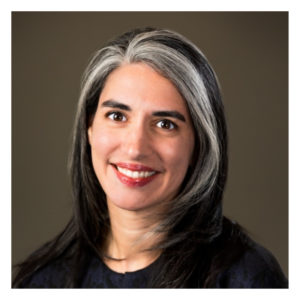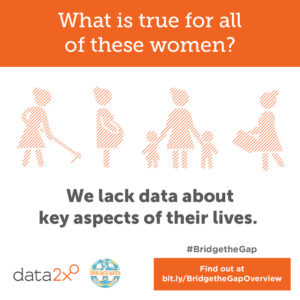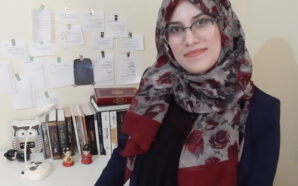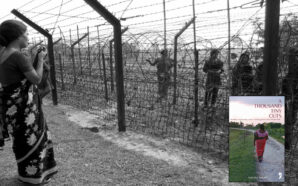This article was previously publishing in Ananke's digital Women's Day edition. To view the special edition, visit Ananke on ISSUU.
Can you tell us what the project Bridging the Gap is all about? When will it be launched and where? What are the main objectives of the project?
Bridging the Gap: Mapping Gender Data Availability in Africais a new project from Data2X, and our partner Open Data Watch, that seeks to contribute to international efforts to understand, identify, and respond to the ongoing challenge of producing policy-relevant data about the lives of women and girls. Bridging the Gaplooks at the availability of data about women and girls in 15 countries in sub-Saharan Africa across six domains of women’s lives: health; education; economic opportunities; political participation; human security; and, the environment. Our goals are to understand regional gender data gaps and to learn from countries that have managed to close the gaps, pinpoint actionable, replicable solutions, and share these lessons broadly.
We launched the technical report and summary of findingson March 7th alongside the 50th session of the United Nations Statistical Commission in New York.
Is there a link to/connection between the current and previous work Mapping Gender Data Gaps? What, in your opinion, has improved and/or changed in gender data mapping since then?

Image Credit: Data2x
Yes, this work builds on our original Mapping Gender Data Gapsreport. That work, published in 2014, was the first independent study to explore gender data gaps in international databasesand launched efforts to find and test innovative solutions to fill gender data gaps. In the five years since that report was published, the Sustainable Development Goals were agreed by 193 countries, resulting in a whole set of indicators that countries need to be able to measure. Gender data is a critical piece of the SDG puzzle – without it we will not be able to track progress across the goals and meet our shared promise to “leave no one behind.” However, we only have data to measure about one-third of the gender-relevant indicators in the SDGs which demonstrates the urgency of this issue.
Bridging the Gap helps us address this urgency by digging deeply into what gender data availability actually looking like at the country level. It shows that the coverage of gender data is still very uneven, both across countries and across domains. For example, while we have a lot of data on health outcomes for women and girls, we still know comparatively little about women’s economic activities, and very little about how women participate in political decision making at a local level or how environmental changes impact women and men differently.
We’ve seen a number of important projects aimed at improving how data on women and girls is produced come to fruition in recent years. This is helping to build a strong bedrock for improved gender data but much more work remains to be done.
According to Data2X website, Bridging the Gap project orients the gap analysis of gender data at three different levels: international, national, and micro. How does the level orientation impact on a gender data analysis?
Bridging the Gaplooks at data in three ways. First, we examined international databases to assess the availability and coverage of their data. We then turned to national databases for each of our 15 focus countries to see whether those countries were producing the indicators we were studying. Our goal was to find out whether national level policy makers have the information they need to make informed decisions. Finally, to dig deep into the surveys and other sources for the data, including how often and to what level of quality, we looked at the microdata sources. This enabled us to see that, for example, while international databases produce indicators on a more regular basis, they focus on a smaller number of them. National databases produce a wider variety of information but on a less regular basis. We also saw that many countries get a large proportion of their data from a small number of important international surveys. This means there is an opportunity to diversify sources to generate more actionable insights.
What was the criteria in choosing countries examined in the report in the upcoming project?
Bridging the Gapfocuses on 15 countries in sub-Saharan Africa. We decided to focus on gender data availability in these specific countries for two reasons. First, we wanted to look at gender data availability within countries that have different income levels and statistical capacities to reflect the diversity of the region. We chose these countries to understand how gender data gaps can exist within different contexts, noting that these 15 countries represent 60% of the population of sub-Saharan Africa.
How does Data2X collaborate with the countries within the project Bridging the Gap?
Data2X will be working more closely with the 15 Bridging the Gapfocus countries through our new gender data focal points program. Our work with these countries will be guided in part by the findings of Bridging the Gapsince it pinpoints where the gaps in gender data are in each country. Additionally, in the next phase of this project we will be producing individual country assessment reports to be shared with the relevant national statistical offices and other stakeholders.
Can you tell us, how the process of gender data gaps examination goes in the context of Bridging the Gap project? If it is possible, please, provide us with the specific examples of gender data analysis of the five original sectors.
 To begin, we assembled a list of 104 gender-relevant indicators covering the six focus areas of this project (economic opportunities, health, education, human security, political participation and the environment). We chose both SDG and non-SDG indicators because we believe that these indicators, if produced regularly and to a high standard, would provide most of the information we need to be able to monitor and deliver on current commitments for women and girls.
To begin, we assembled a list of 104 gender-relevant indicators covering the six focus areas of this project (economic opportunities, health, education, human security, political participation and the environment). We chose both SDG and non-SDG indicators because we believe that these indicators, if produced regularly and to a high standard, would provide most of the information we need to be able to monitor and deliver on current commitments for women and girls.
Next, we looked at both international and national databases to assess existing data, specifically examining: availability(whether the 104 indicators were recorded at all in any form over the period 2010 to 2018); disaggregation(if the existing indicators were sex-disaggregated and whether they reported against additional disaggregations such as geographic location, age, income level, or disability status); adherence to standards(whether indicators were being produced according to international standards); and, timeliness(how recently the indicators had been produced and if they had a history of appearing frequently).
Why is it important to examine gender data gaps, how can it help as far as policy making, women’s access and participation in labour markets and the future of work is concerned?
Examining gender data gaps—and filling them—is critical for understanding the unique experiences of women and girls and for enabling policymakers to make more informed decisions that improve their lives and opportunities. For example, gender data-informed policy can help improve women’s access to and participation in labor markets by recognizing their needs and time constraints, which could translate to better childcare policies, access to time-saving investments like electricity, and education or training opportunities. From this research we know that only 7 of the countries we studied produced an indicator on hours spent in paid and unpaid work (by sex) in the last 9 years. We need this data more regularly, and from more countries, if we want to increase women’s engagement in the labor market and understand if policies are having the desired effect. If we do not properly measure and account for women’s current contributions to economies and their current disadvantage in accessing labor markets – these disadvantages will continue to play out in the future, to the detriment of gender equality and to country economies.
What does the project contribute to gender equality in examined regions and worldwide?
Data2X believes that efforts to achieve gender equality must be underpinned by solid evidence. Without complete data about all people, women and girls and men and boys, our efforts cannot and will not succeed. Through this new project, we hope to spur actionable, country-specific solutions to help fill gender data gaps – which will hopefully lead to data-informed policies and programs with the goal of gender equality at their core.











